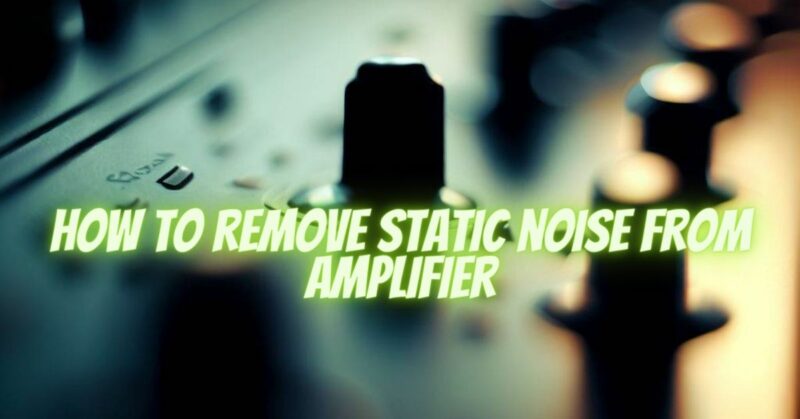Static noise coming from an amplifier can be frustrating and compromise the audio quality of your sound system. Fortunately, there are several troubleshooting techniques you can use to identify and resolve static noise issues. In this article, we will explore practical steps to help you remove static noise from your amplifier and restore clean and clear sound.
- Check Cable Connections:
Start by inspecting all cable connections between the amplifier and the audio source, such as a mixer, preamp, or audio interface. Ensure that the cables are firmly plugged in and secured. Loose or damaged connections can introduce static noise. If you notice any frayed or worn cables, replace them with high-quality cables to ensure a reliable connection.
- Clean the Input Jacks:
Dirt and debris can accumulate in the input jacks of the amplifier, leading to poor contact and static noise. Use a can of compressed air or a clean, lint-free cloth to gently remove any dust or particles from the input jacks. Be careful not to use excessive force or liquid cleaners, as this may cause damage.
- Verify Grounding:
Proper grounding is essential for minimizing static noise in amplifiers. Ensure that your amplifier is correctly grounded by connecting it to a grounded power outlet or power conditioner. Faulty or inadequate grounding can introduce electrical interference, resulting in static noise. Consult an electrician or audio professional if you’re uncertain about the grounding.
- Isolate Power Sources:
Electrical interference from other devices connected to the same power source can contribute to static noise. Try plugging your amplifier into a dedicated power outlet to minimize interference from other devices sharing the same circuit. Avoid using power strips or extension cords that can introduce additional noise.
- Use Quality Power and Signal Cables:
Using high-quality power and signal cables can significantly reduce static noise. Invest in cables that are shielded to minimize interference from external sources. Avoid running audio cables alongside power cables, as this can introduce unwanted noise. Additionally, ensure that the power cables are in good condition and properly connected to the amplifier.
- Keep Amplifier Ventilation:
Amplifiers generate heat, and overheating can lead to static noise. Ensure that your amplifier has proper ventilation and is not placed in an enclosed space or covered by objects that obstruct airflow. Adequate cooling helps maintain optimal performance and reduces the chances of static noise.
- Test with Different Audio Sources:
If the static noise persists, try connecting different audio sources to the amplifier. This helps determine whether the issue lies with the amplifier itself or the original audio source. Testing with alternative sources can help narrow down the root cause of the problem and guide your troubleshooting efforts.
- Consult an Audio Professional:
If you have exhausted all the troubleshooting steps and the static noise problem persists, it may be beneficial to consult an audio professional. They have the expertise and specialized equipment to diagnose complex amplifier issues and provide appropriate solutions.
Conclusion:
Removing static noise from an amplifier requires careful troubleshooting and attention to detail. By checking cable connections, cleaning input jacks, verifying grounding, isolating power sources, using quality cables, ensuring proper ventilation, and testing with different audio sources, you can effectively identify and resolve static noise issues. If necessary, seek professional assistance to address any persistent problems. Enjoy clean, noise-free sound from your amplifier and enhance your audio listening experience.


